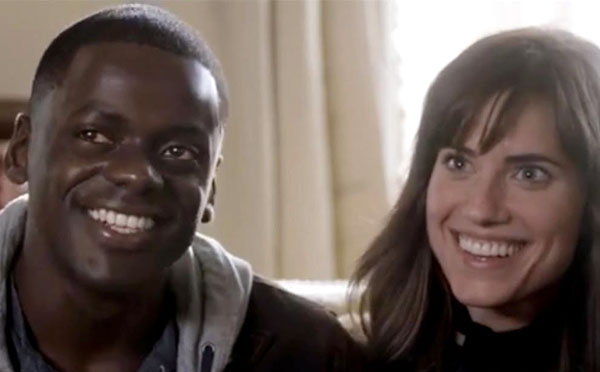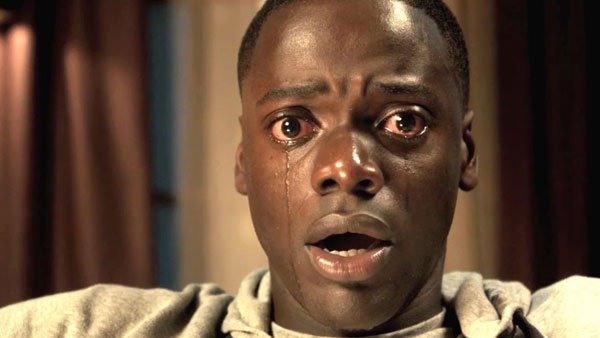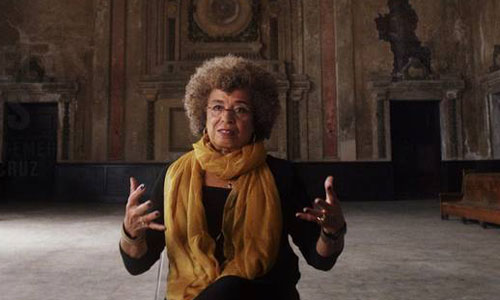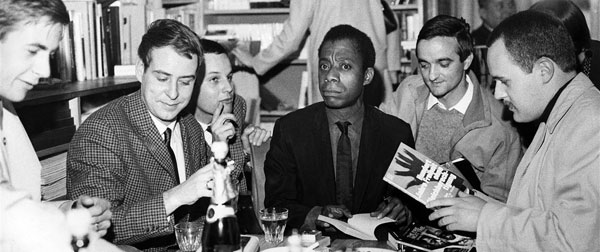|
The past few years have seen the release of some of the best, and most popular, films ever to interpret the African-American experience: 12
Years a Slave, Fruitvale Station, Selma, The Butler, Fences, Moonlight, Loving, Hidden Figures. 12 Years a Slave andMoonlight were deserving winners of the Best Picture
Oscar. Whether African-American filmmakers and actors are seeing more opportunity in Hollywood is debatable; the excellence of the films themselves is not.
Jordan Peele—one-half of the comedy team of Key and Peele—has added something new and exhilarating to the filmography: a thriller
about black paranoia in a white society. Be assured that the paranoia in Peele’s screenplay is not only justified, but literally a matter of life and death.
Get Out begins with a horrifying sequence featuring a black man being attacked and abducted in a “nice” suburban
neighborhood. It continues with Chris Washington (Daniel Kaluuya), a young black photographer with a wealthy white girlfriend, Rose Armitage (Allison Williams). Chris
and Rose have planned a weekend trip to the country estate of Rose’s parents, Missy (Catherine Keener) and Dean (Bradley Whitford). Chris is alarmed to learn that Rose
did not tell her parents in advance that he is black, but Rose assures him they would have voted for Obama for a third term had that been possible.

Missy and Dean are friendly to Chris, but in forced and patronizing ways. Rose’s brother Jeremy (Caleb Landry Jones)
is an oaf who barely attempts to conceal his racism. The few black people in evidence are the Armitages’ maid Georgina
(Betty Gabriel) and handyman Walter (Marcus Henderson), as well as Logan (Lakeith Stanfield), the boy-toy of a much older
white woman. Georgina, Walter, and Logan are—to put it mildly—a little strange. And it is stranger still when Logan—at a
garden party where the guests are all friendly in forced and patronizing ways--suddenly grabs Chris by the collar and yells, “GET OUT! GET OUT!”

Get Out is a well-made, well-acted thriller, but what makes it distinctive is Peele’s mastery at capturing the basic disconnect
between black and white society. For Chris, walking through the all-white garden party is like walking through a minefield of
misunderstanding and latent hostility. Even before this, Chris is exposed to dangers borne of the cluelessness of Rose and other
whites. Chris and Rose encounter a white policeman on their way to the country; although Rose is the driver, the cop
demands Chris’ driver’s license. Chris hands it over quietly, but Rose immediately starts chewing out the cop. She is blithely
unaware that the cop is ready to take her insolence out on Chris. Chris knows it all too well, but dares not say anything.
All this, of course, is prelude to the actual horror, which will leave audiences gasping. Interviewed about Get Out, Peele
mentioned The Stepford Wives as a particular inspiration. It was a perfect choice. Logan, Georgina and Walter are the
homogenized, denatured Stepford blacks that “liberals” such as Rose, Dean and Missy find acceptable. Jeremy, meanwhile,
finds no blacks acceptable. If you take the family as an extreme microcosm of white society, you’re catching on.
Throughout, Peele shows real talent in playing horror tropes; you’d never guess that a cup of tea could be so sinister. There is
also some robust comedy relief—most of it involving Rod (LilRel Howery), Chris’ TSA-inspector best friend—but it’s the horror you’ll remember.
The horrors in Get Out are symbolic of the real-life horrors delineated in two Oscar-nominated documentaries, Ava DuVernay’s 13th and Raoul Peck’s I Am Not Your Negro.
O.J.: Made in America, which won the Oscar this year, was a monumental eight-hour film directed by Ezra Edelman. While it
concentrates on Simpson’s life and trial, O.J.: Made in America contains a great deal of historical context about the racist
violence committed by the Los Angeles Police Department that made Simpson’s acquittal possible. The assault on Rodney King was the least of it. 13th and I Am Not Your Negro expand on
that violence, extending their focus to the entire history of the United States.
13th has a simple, horrifying thesis. When the 13th Amendment to the U.S. Constitution was passed in 1865, it outlawed slavery
everywhere in the United States unless as punishment for a crime (italics mine). According to the film, those wealthy white
men with vested interests to protect saw a plain solution to the sudden loss of unpaid labor: enlarge the population of prisoners, and make sure most of them were black.

With the help of interviewees ranging from Angela Davis to Newt Gingrich, 13th shows how Jim Crow laws criminalized various
behaviors to justify putting black people behind bars. When the Civil Rights and Voting Rights Acts passed, right-wing racists
had another ready solution: escalate the War on Drugs with draconian, mandatory prison sentences. Liberal lawmakers,
afraid of being branded as “soft on crime,” fell into line.
Moving at breakneck speed, 13th tells the sad, shocking tale of how the U.S., which has 5 percent of the world’s population, also
has 25 percent of the world’s prison population. It lingers on the many pernicious aspects of a racist prison system: a large
population of black ex-convicts unable to vote or find jobs, as well as a privatized prison system that jacks up profits by serving
spoiled, maggot-ridden food and overcharging for the cost of telephone calls made by prisoners. Federal prisons have become the company store.
13th offers suggestions at its end on how to fight for change, but those recommendations sound forlorn after detailing so much
injustice. With the election of a president who was supported by private prison companies and supports them in return, there seems little hope for imminent change.
As fine and shocking as 13th is, it must still take second place to I Am Not Your Negro, which must be regarded as one of the
most important and powerful American films of all time, in any genre.
The basis for I Am Not Your Negro isRemember This House, a manuscript James Baldwin left unfinished when he died in 1987. Remember This House, as Baldwin planned it, was to be an
exploration of race relations in America as seen in context of the assassinations of Baldwin’s friends: Martin Luther King, Malcolm X, and Medgar Evers.
I Am Not Your Negro is a reaffirmation of Baldwin not only as a great essayist, but as a perennially relevant one. Unfortunately,
Baldwin’s continuing relevance is not good news for any Americans. Combining the text of Remember This House (read
by Samuel L. Jackson) with archival footage of Baldwin, I Am Not Your Negro drives home Baldwin’s message that African
-Americans could expect only two things from whites: indifference or violent hostility.
Baldwin’s eloquence is damning, in his own filmed statements and in the text read by Jackson. “It comes as a great shock
around the age of 5 or 6 or 7 to discover that Gary Cooper killing off the Indians—when you were rooting for Gary Cooper—that
the Indians were you!” Baldwin wrote. “It comes as a great shock to discover the country that is your birthplace, and to
which you own your life and your identity, has not in its whole system of reality evolved any place for you.”
Whereas DuVernay bombards us with images in 13th, Peck contrives to have his images flow like a great, tragic river. He
draws us into Baldwin’s thesis by juxtaposing insipid images of white contentment—most of them, of course, from Hollywood-
-with scenes of lynchings and riots. The deaths of King, Evers and Malcolm are intertwined with those of the murdered
children Emmett Till, Trayvon Martin and Tamir Rice. The effect is hypnotic, never more so than when Baldwin is on screen
himself, defiant against the condescension of self-satisfied whites.

Although Baldwin declared himself an optimist, that optimism was not easy for him to maintain. I remember him at a luncheon
speech at the National Press Club not long before he died, staring at the audience in angry disgust at the hostile questions
it asked him. His reaction to those questions remained as always: “What white people have to do is try to find out in their
hearts why it was necessary for them to have a nigger in the first place. Because I am not a nigger. I’m a man.”
|